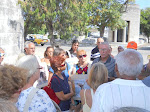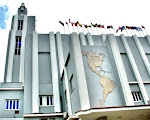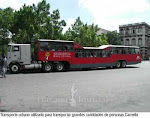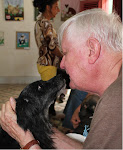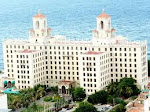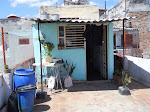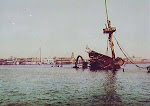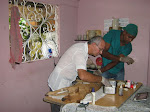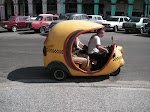Ladas I Have Known
Old US made cars aren't the only cars on Cuba's highways and
Havana's streets. New taxis are Hyundais
and Kias and the occasional Peugeot, and then there's the ubiquitous Lada. The Lada 125, shown in the picture, is
everywhere you look. Made in Russia and
exported to Cuba, the Lada was a natural choice for Cuba as it pivoted early on
away from western imports to dependence on the Soviet Union.
Really, it all began with Italy's giant Fiat Group
Automobiles many years ago. Fiat, it seemed,
wanted to make cars everywhere in the world, and it succeeded in establishing
car factories in Spain, Bulgaria, Turkey, South Korea, Egypt, India, and
Russia, where Ladas, a poor man's edition of the Fiat, were made. When Cuba fell out with the US and suffered
an embargo of US goods, Russia was ready with the Lada—such as it was.
Fiat's success in exporting its small cars around the world
managed to create 15 million little slab-sided machines all over the world—a
number in a class only with Volkswagen Beetles and Model T Fords. But frankly, the Russian Ladas—at least those
in Cuba—are hardly a standard of quality to wave before the world. Still, they have survived in surprising
numbers in Cuba thanks to several factors including—high car prices, low
incomes, restrictions an buying new cars, and the prowess of Cuban shade tree
mechanics. Thus I have come to my theme:
three Ladas I have known.
1. The Doctor's Wheels
On my first trip to Cuba, Christina (HSUS's Latin American
Coordinator) and I met Dr. Gilbert Flietes and his charming wife. They took us to dinner in their Lada, then
about 30 years old. It had a cracked
windshield, but you could ignore the crack as it still parted the wind. It had all of its paint and upholstery, but
surely showed its age.
Now Gilbert was one of the top thoracic surgeons in
Cuba. His American equivalent would have
easily earned 1 million dollars a year and driven a Mercedes. But in Cuba on a salary of perhaps $25 a
month, even the best doctors make do with old Ladas. The good doctor was affiliated with the
Physicians Committee for Responsible Medicine, an important American animal
protection group. Gilbert and his wife
had no companion animals at home, but every night, they fed two feral dogs who
lived in a nearby park. My kind of
people.
2. Taxi on a Shoestring
I wrote about this Lada before. We found it on a dark Old Havana street late
at night after a music show we'd taken in.
The driver negotiated a 15 CUC fare to get us back to our hotel, and we
set off on dark, unfamiliar streets. The
car was on its last legs—no upholstery on the doors, and a replacement diesel
truck engine whooping up a racket under the hood.
The driver stopped in a dark gas station and asked me to pay
our fare, although we were nowhere near the hotel. A little discussion revealed he was almost
out of gas and needed our fare to pay for more gas and continue driving
on. Having little choice, I paid, and we
eventually ended up at our hotel.
3. Home from the Aquarium
As we left the Havana Aquarium, there were two taxis waiting
on a nearby street. The first in line
was a new Hyundai, and I thought, "We're in luck, as I told him where we
wanted to go. I was dismayed when he
ushered us to the old Lada second in line.
A down and out looking young man sat at the wheel as we reluctantly
filled all four empty seats.
If the car looked bad on the outside, it was worse on the
inside. The doors lacked upholstery, and
the seats were recovered haphazardly in cracked old red leatherette. The engine sounded like a bulldozer, and the
driver told us to slam the doors to get them to stay shut. He also warned us not to lean on the doors
while in motion as they could fly open without warning. To make matters worse, he didn't know where our hotel was,
and I had to give him directions.
It was clear he was an illegal taxi operator. He had no meter, no sign on the outside, and
he explained he would stop and let us out a block away from the hotel just in
case any police were there checking for the arrival of illegal taxis. He did as he said, and we found ourselves on
the sidewalk a block from the hotel. As
he drove past the hotel taxi stand, he looked like any other beat up old Lada
private car clanking along Calzada Street.
On a trip to Havana a traveler can hardly miss coming into
contact with ancient Ladas—there are so many of them, but you'll soon learn to
avoid them if at all possible.

